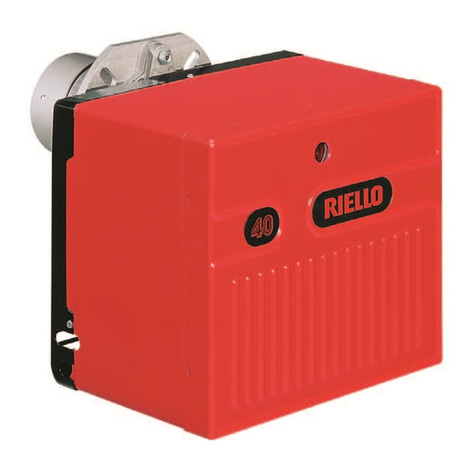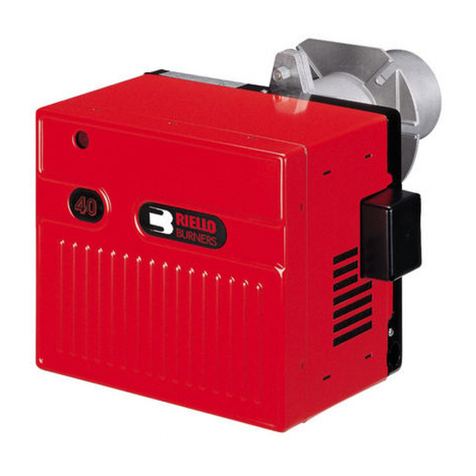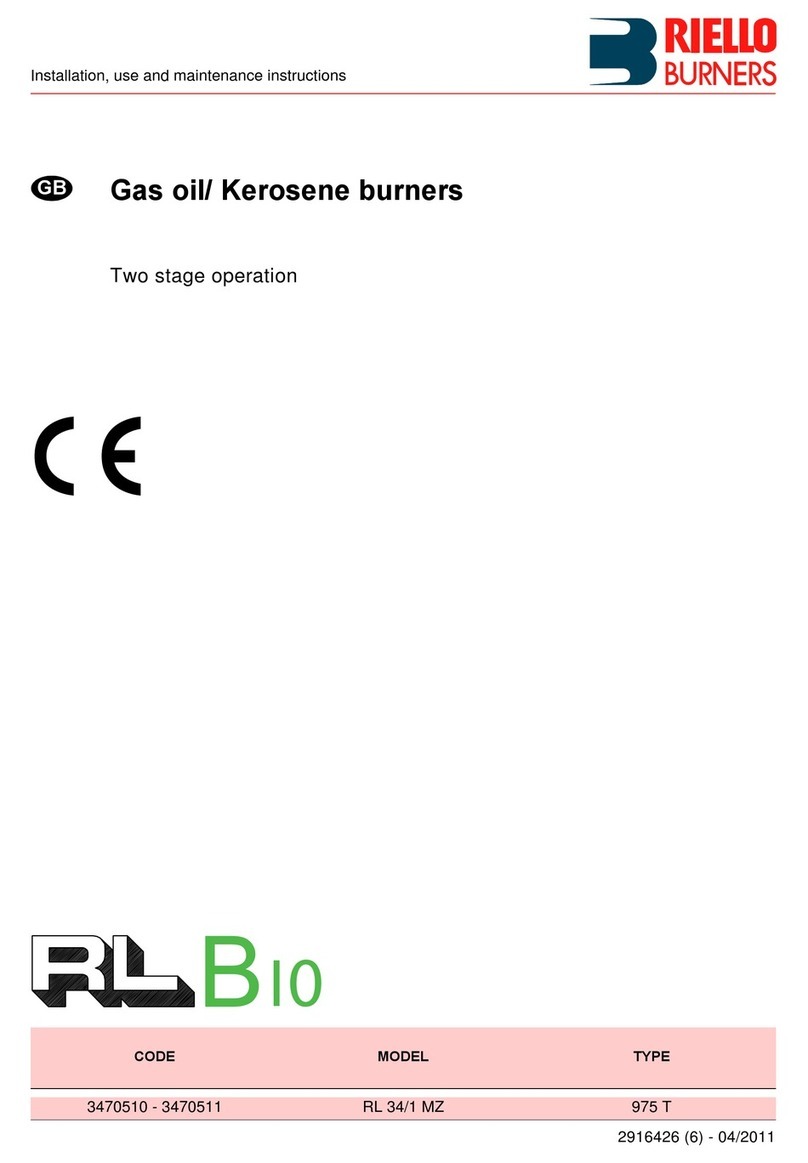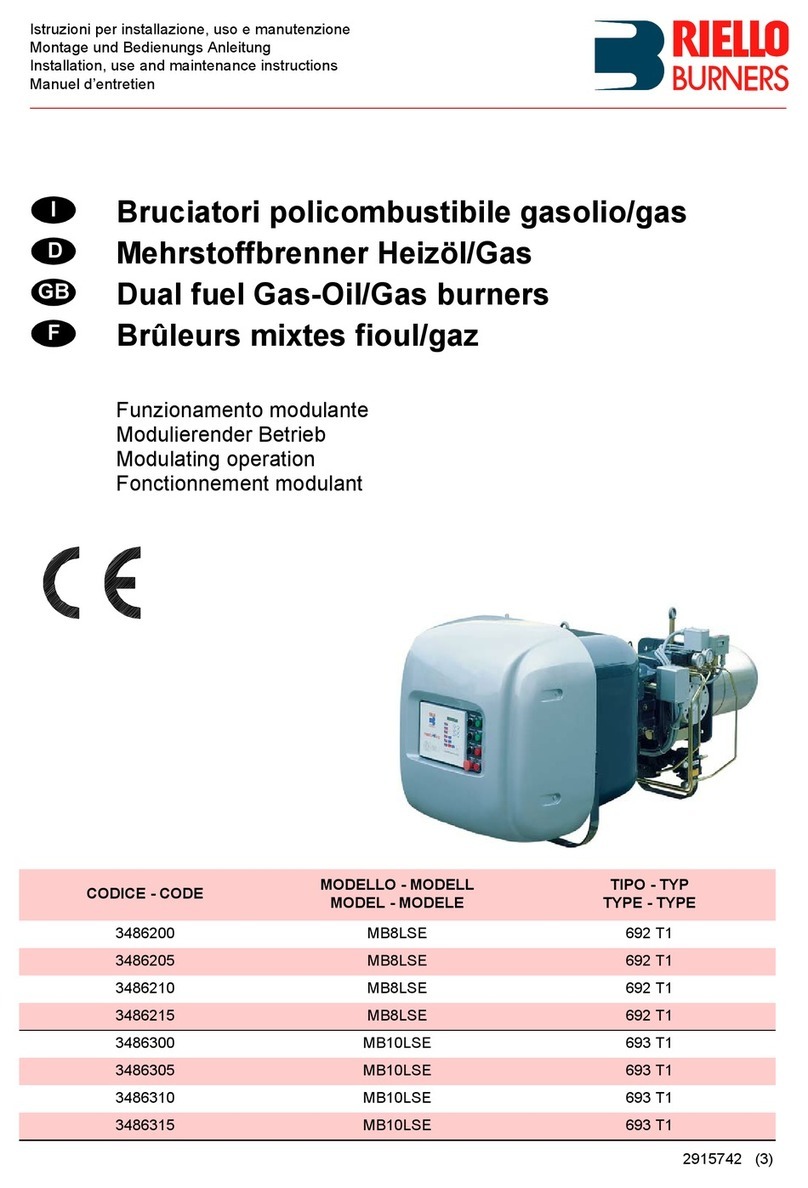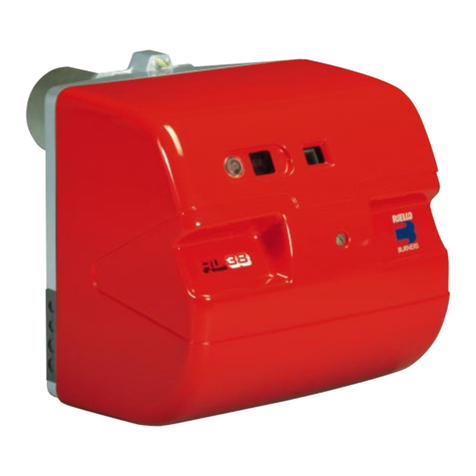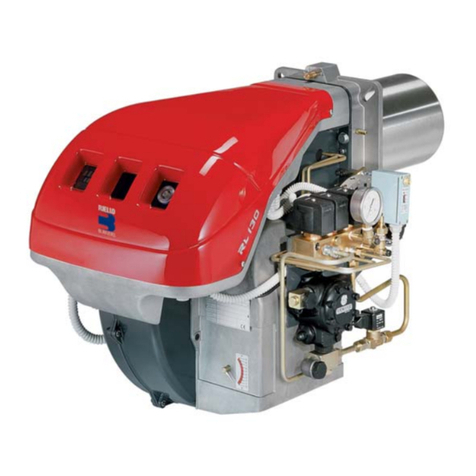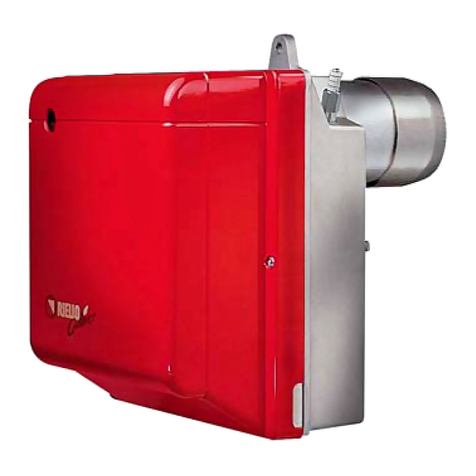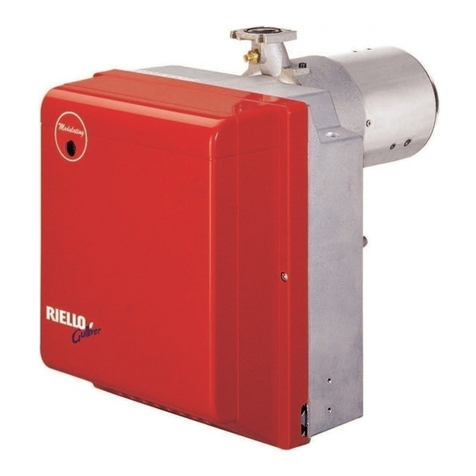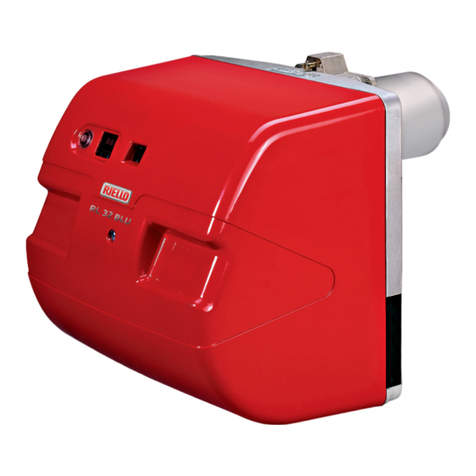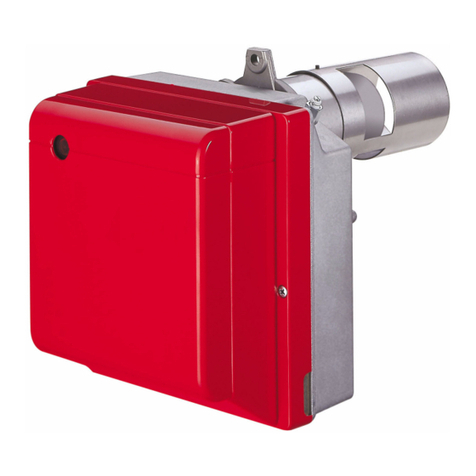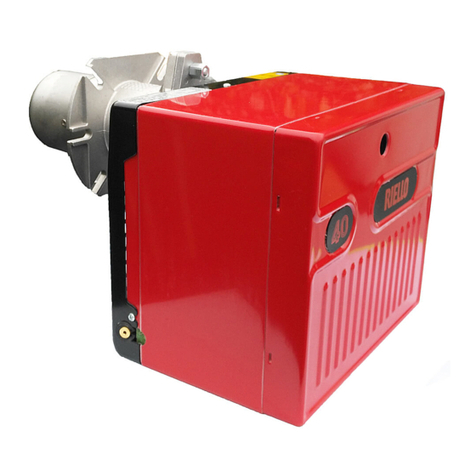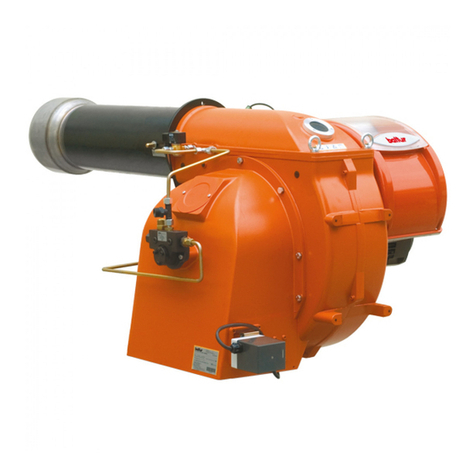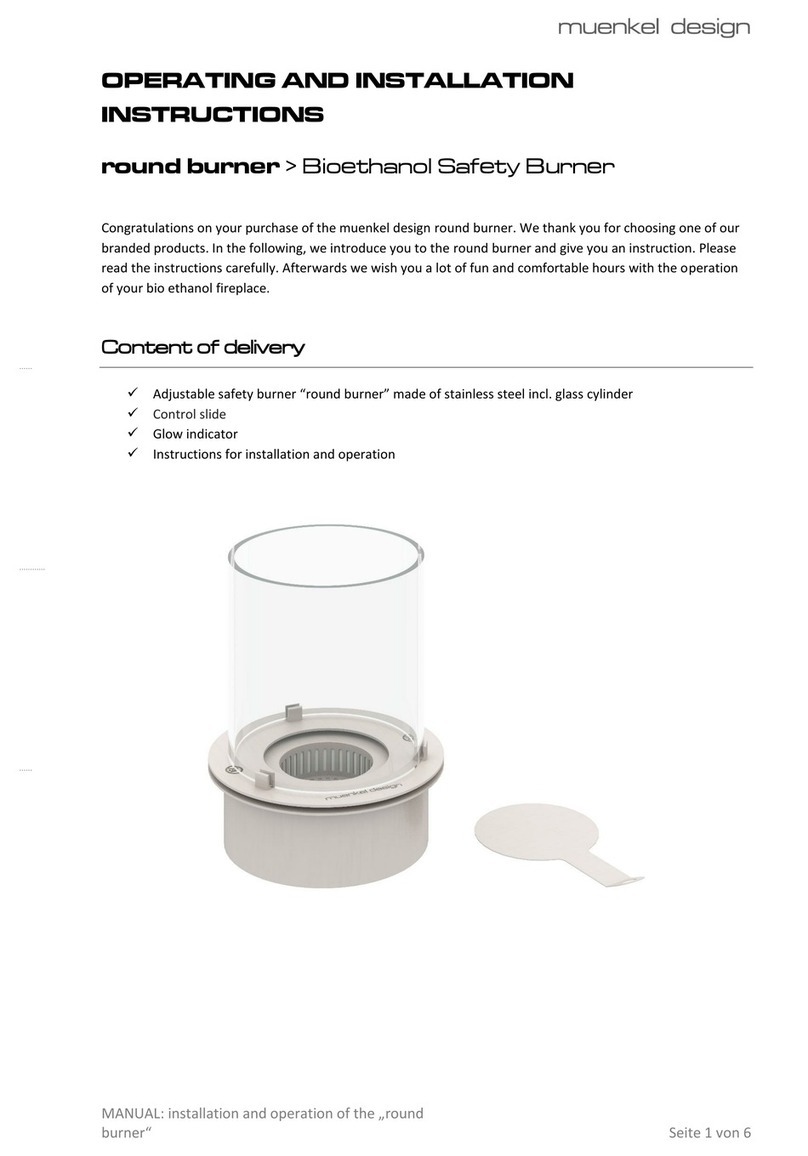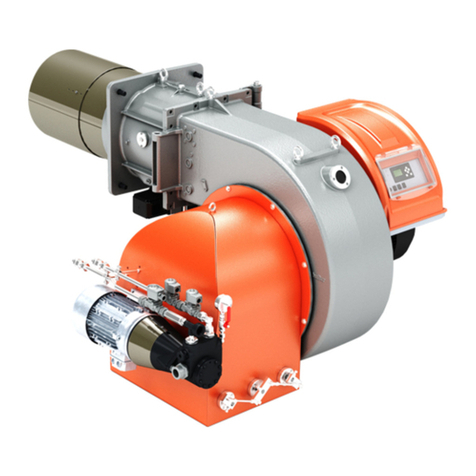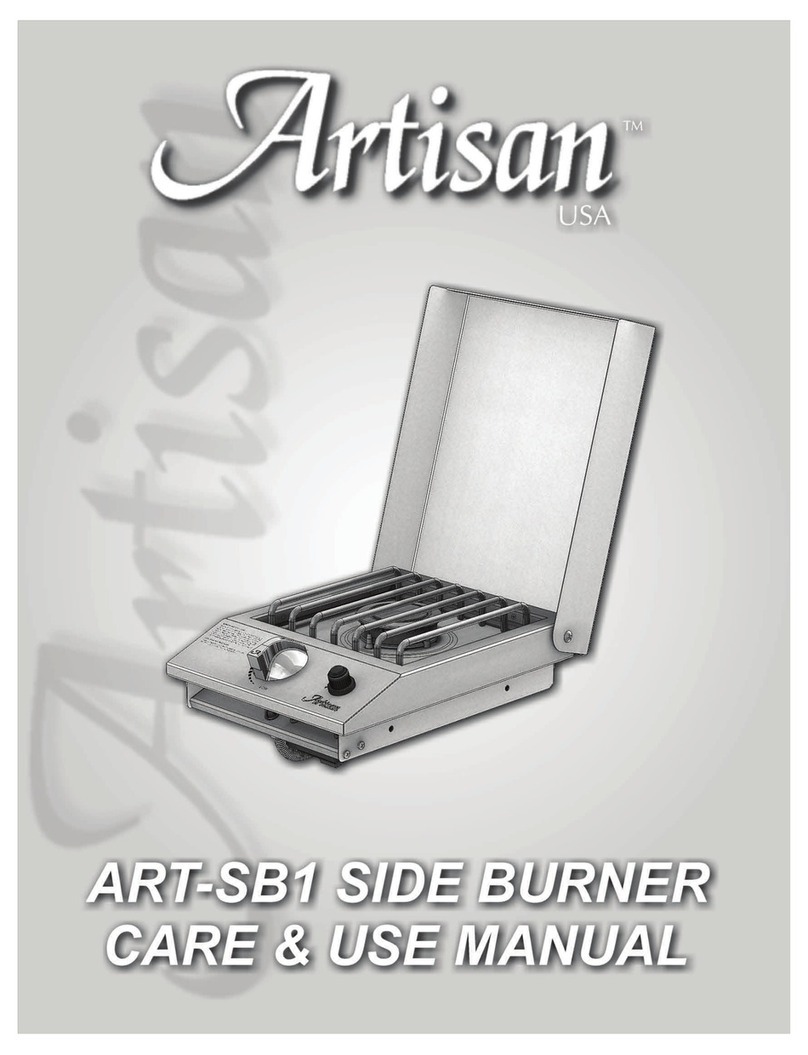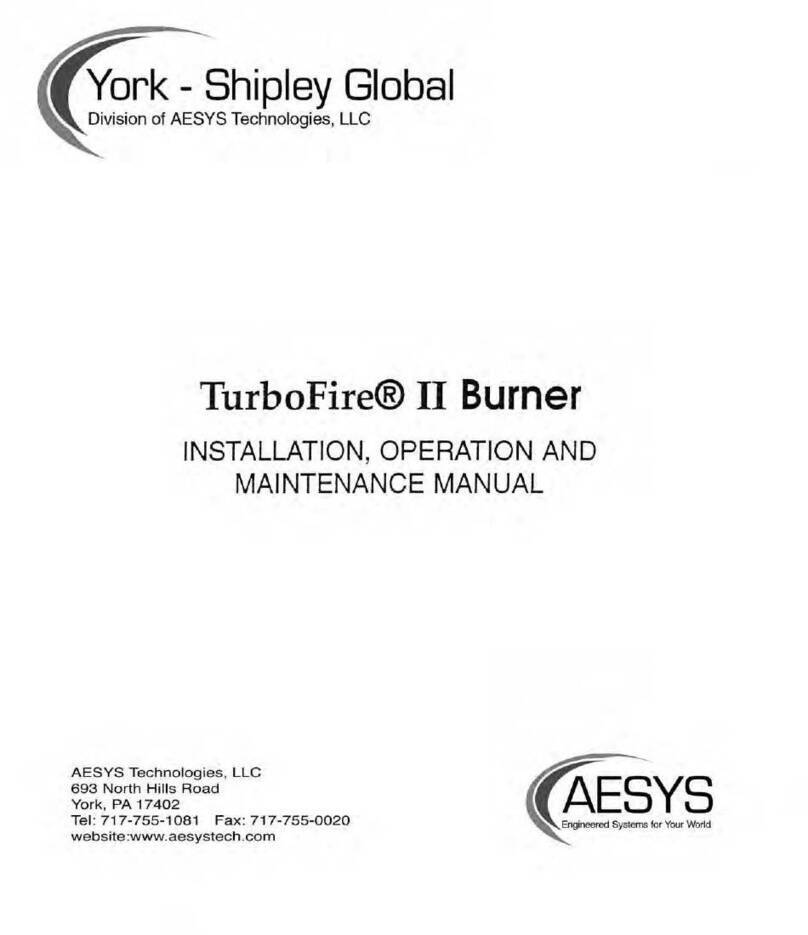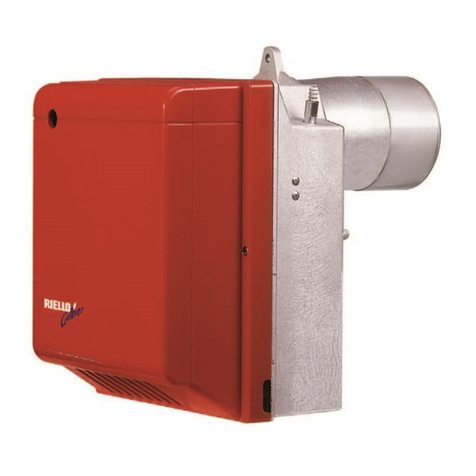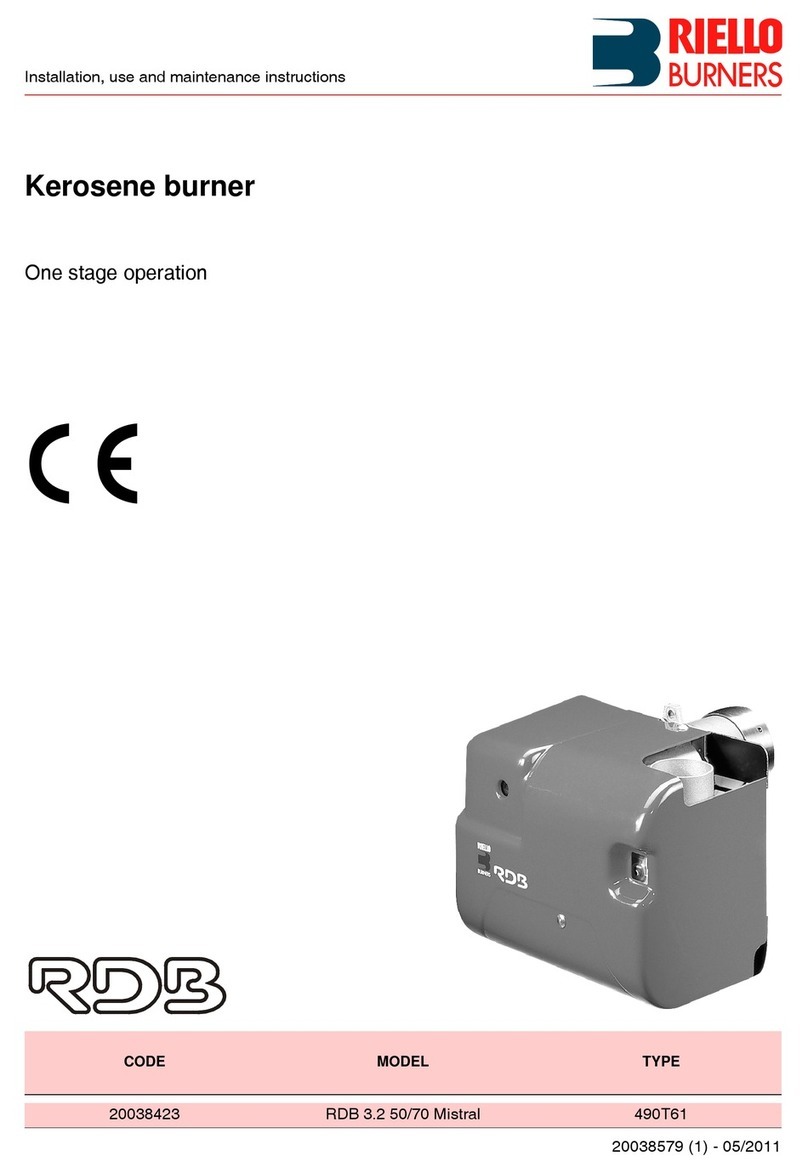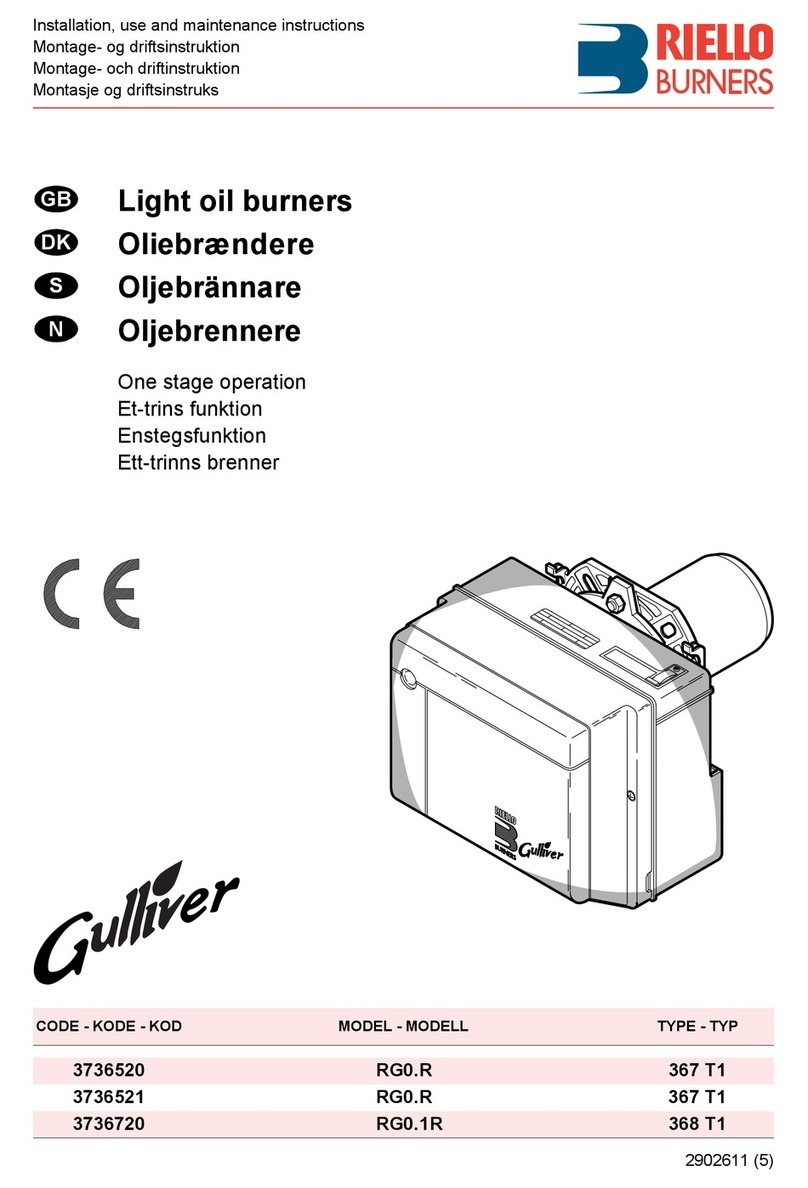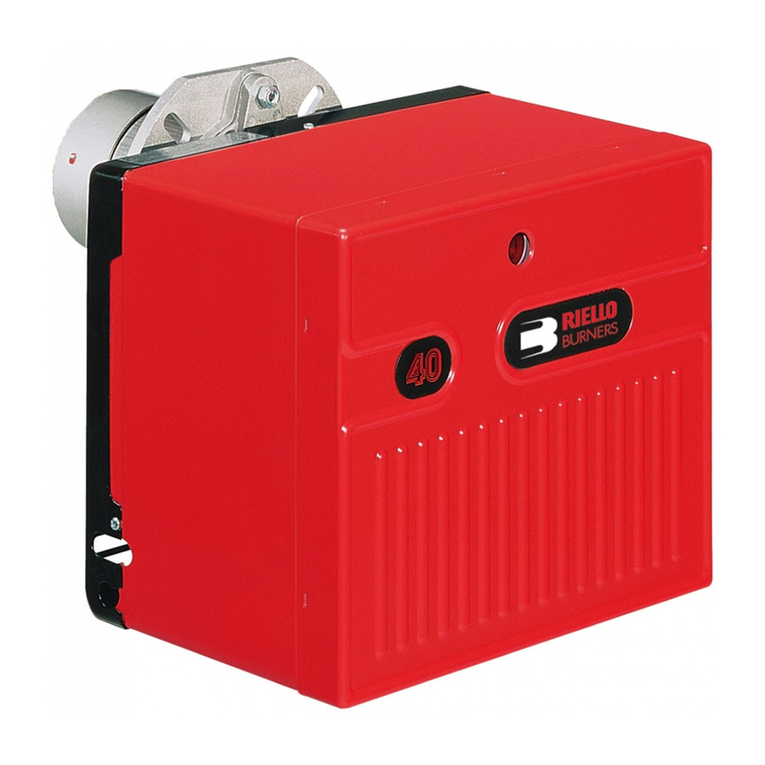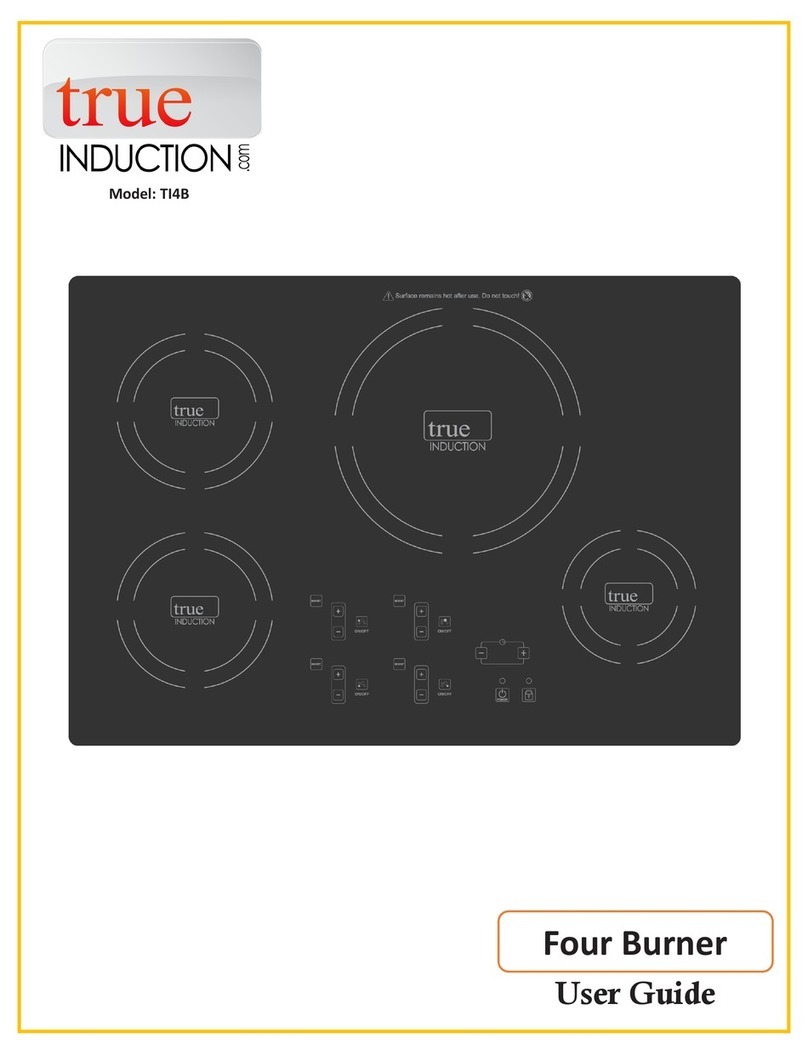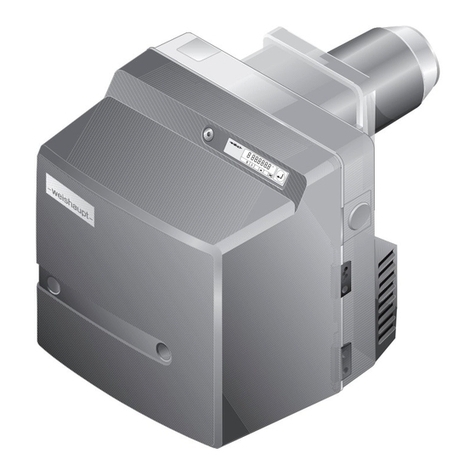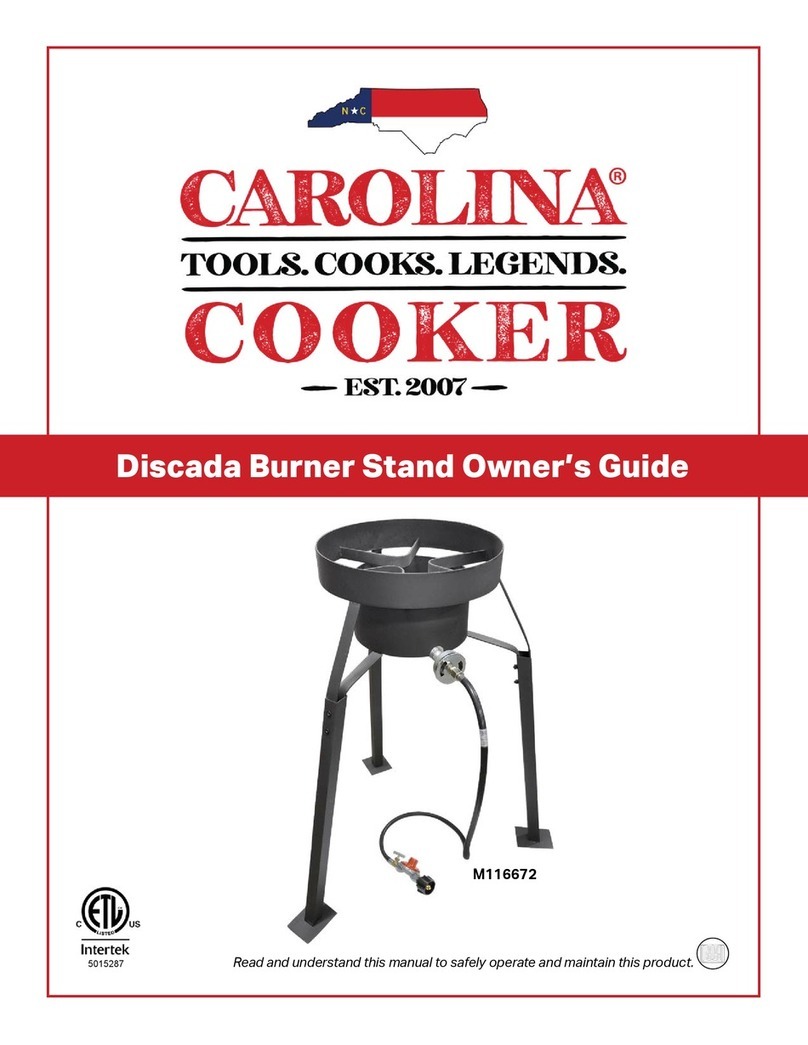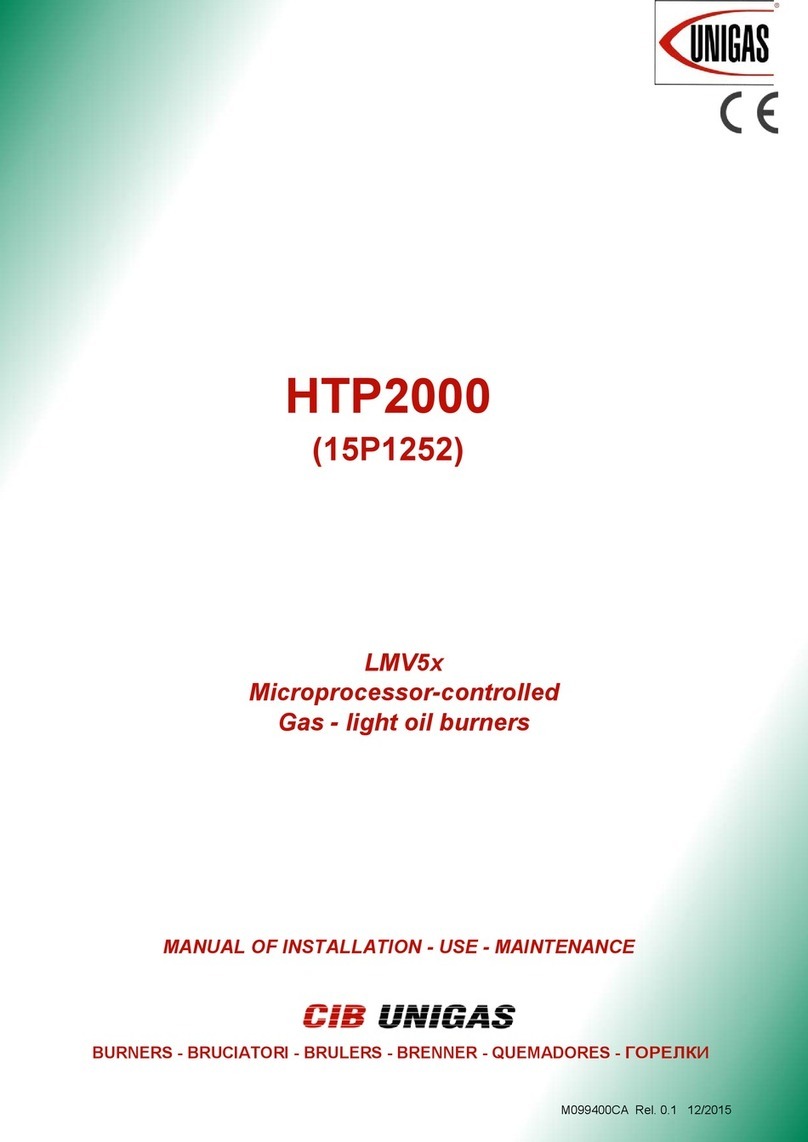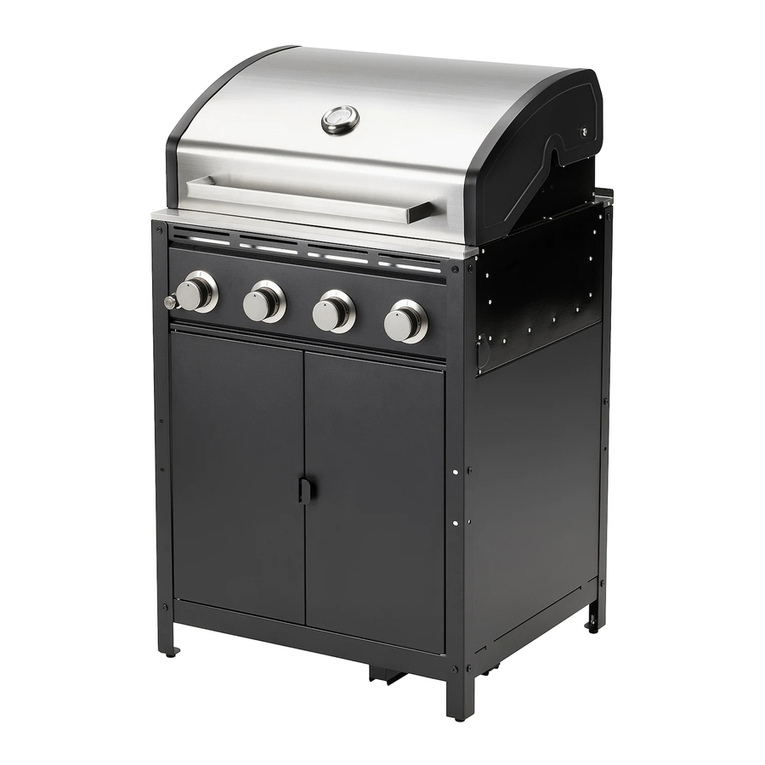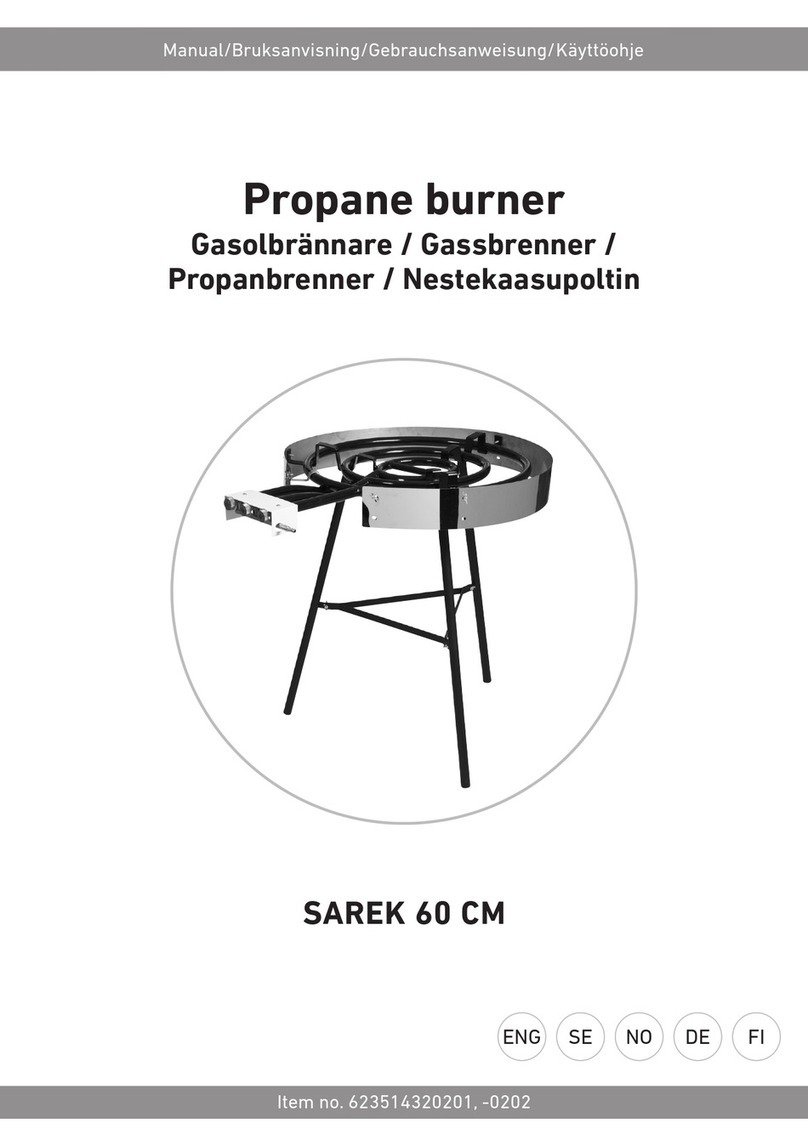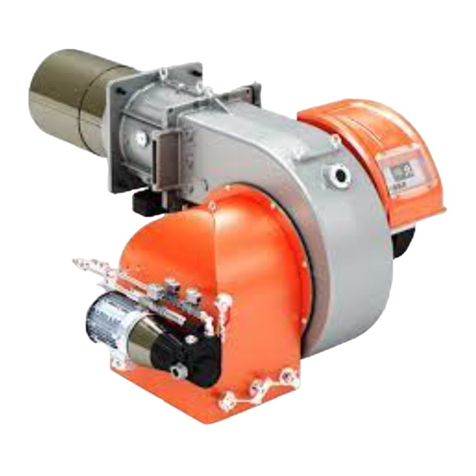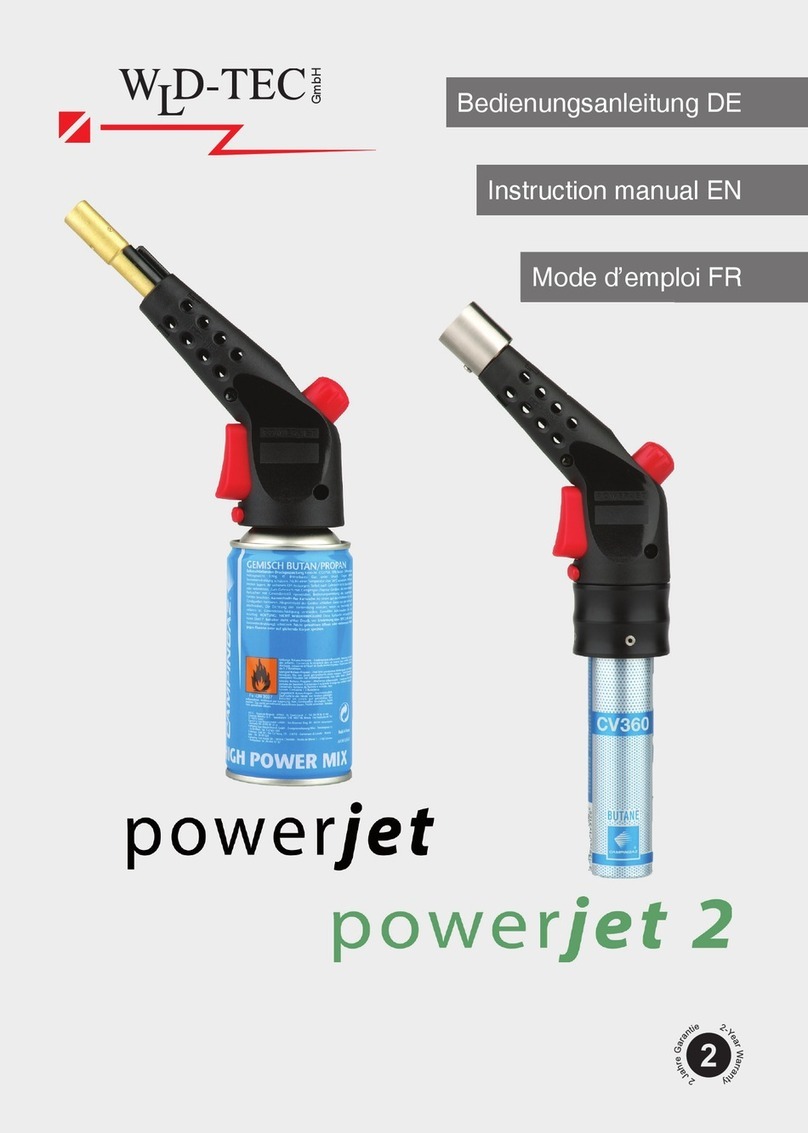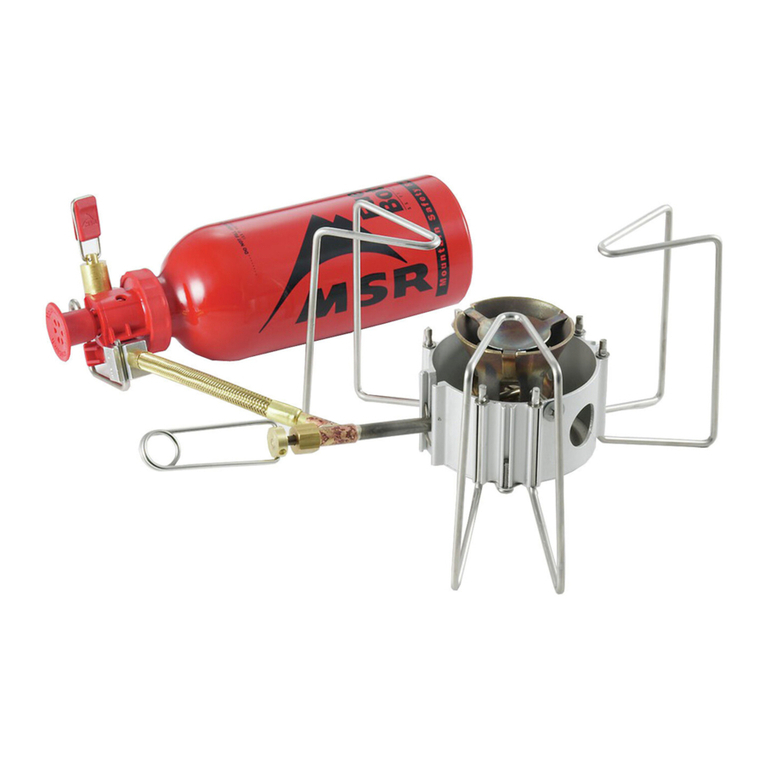
3
INDICE
Dati tecnici
. . . . . . . . . . . . . . . . . . . . . . . . . . . . . . . . . . . pagina 4
Accessori . . . . . . . . . . . . . . . . . . . . . . . . . . . . . . . . . . . . . . . . . . . 4
Designazione bruciatori . . . . . . . . . . . . . . . . . . . . . . . . . . . . . . . . 5
Elenco modelli disponibili. . . . . . . . . . . . . . . . . . . . . . . . . . . . . . . 5
Descrizione bruciatore . . . . . . . . . . . . . . . . . . . . . . . . . . . . . . . . 12
Descrizione quadro elettrico. . . . . . . . . . . . . . . . . . . . . . . . . . . . 14
Imballo - Peso. . . . . . . . . . . . . . . . . . . . . . . . . . . . . . . . . . . . . . . 14
Corredo . . . . . . . . . . . . . . . . . . . . . . . . . . . . . . . . . . . . . . . . . . . 14
Ingombro . . . . . . . . . . . . . . . . . . . . . . . . . . . . . . . . . . . . . . . . . . 16
Campi di lavoro. . . . . . . . . . . . . . . . . . . . . . . . . . . . . . . . . . . . . . 16
Caldaie. . . . . . . . . . . . . . . . . . . . . . . . . . . . . . . . . . . . . . . . . . . . 16
Caldaia di prova . . . . . . . . . . . . . . . . . . . . . . . . . . . . . . . . . . . . . 17
Installazione
. . . . . . . . . . . . . . . . . . . . . . . . . . . . . . . . . . . . . . . 18
Piastra caldaia . . . . . . . . . . . . . . . . . . . . . . . . . . . . . . . . . . . . . . 18
Lunghezza boccaglio . . . . . . . . . . . . . . . . . . . . . . . . . . . . . . . . . 18
Fissaggio del bruciatore alla caldaia . . . . . . . . . . . . . . . . . . . . . 18
Montaggio ugello . . . . . . . . . . . . . . . . . . . . . . . . . . . . . . . . . . . . 18
Scelta ugello. . . . . . . . . . . . . . . . . . . . . . . . . . . . . . . . . . . . . . . . 18
Variatore di pressione. . . . . . . . . . . . . . . . . . . . . . . . . . . . . . . . . 20
Posizione elettrodi . . . . . . . . . . . . . . . . . . . . . . . . . . . . . . . . . . . 20
Regolazione testa di combustione . . . . . . . . . . . . . . . . . . . . . . . 20
Pompa . . . . . . . . . . . . . . . . . . . . . . . . . . . . . . . . . . . . . . . . . . . . 22
Collegamenti idraulici. . . . . . . . . . . . . . . . . . . . . . . . . . . . . . . . . 22
Innesco pompa. . . . . . . . . . . . . . . . . . . . . . . . . . . . . . . . . . . . . . 22
Regolazione pompa . . . . . . . . . . . . . . . . . . . . . . . . . . . . . . . . . . 22
Rotazione motore ventilatore e motore pompa . . . . . . . . . . . . . 22
Alimentazione combustibile . . . . . . . . . . . . . . . . . . . . . . . . . . . . 24
Regolazioni prima dell’accensione (a gas). . . . . . . . . . . . . . . . . 24
Linea alimentazione gas. . . . . . . . . . . . . . . . . . . . . . . . . . . . . . . 26
Pressostato aria . . . . . . . . . . . . . . . . . . . . . . . . . . . . . . . . . . . . . 28
Pressostato gas di massima . . . . . . . . . . . . . . . . . . . . . . . . . . . 28
Pressostato gas di minima. . . . . . . . . . . . . . . . . . . . . . . . . . . . . 28
Manutenzione. . . . . . . . . . . . . . . . . . . . . . . . . . . . . . . . . . . . . . . 30
Funzionamento bruciatore . . . . . . . . . . . . . . . . . . . . . . . . . . . . . 32
Schema idraulico . . . . . . . . . . . . . . . . . . . . . . . . . . . . . . . . . . . . 32
Sistema di regolazione aria/combustibile
e modulazione potenza . . . . . . . . . . . . . . . . . . . . . . . . . . . . . . . 34
Appendice
Schema quadro elettrico . . . . . . . . . . . . . . . . . . . . . . . . . . . . . . 38
Moduli aggiuntivi (optional). . . . . . . . . . . . . . . . . . . . . . . . . . . . . 52
I
INHALT
Technische Angaben
. . . . . . . . . . . . . . . . . . . . . . . . . . . . Seite 6
Zubehör. . . . . . . . . . . . . . . . . . . . . . . . . . . . . . . . . . . . . . . . . . . . . 6
Bezeichnung der Brenner . . . . . . . . . . . . . . . . . . . . . . . . . . . . . . . 7
Verzeinis der Modelle . . . . . . . . . . . . . . . . . . . . . . . . . . . . . . . . . . 7
Brennerbeschreibung . . . . . . . . . . . . . . . . . . . . . . . . . . . . . . . . . 13
Beschreibung der Schalttafel . . . . . . . . . . . . . . . . . . . . . . . . . . . 15
Verpackung - Gewicht. . . . . . . . . . . . . . . . . . . . . . . . . . . . . . . . . 15
Ausstattung. . . . . . . . . . . . . . . . . . . . . . . . . . . . . . . . . . . . . . . . . 15
Abmessungen. . . . . . . . . . . . . . . . . . . . . . . . . . . . . . . . . . . . . . . 17
Regelbereiche. . . . . . . . . . . . . . . . . . . . . . . . . . . . . . . . . . . . . . . 17
Kessel . . . . . . . . . . . . . . . . . . . . . . . . . . . . . . . . . . . . . . . . . . . . . 17
Prüfkessel . . . . . . . . . . . . . . . . . . . . . . . . . . . . . . . . . . . . . . . . . . 17
Installation
. . . . . . . . . . . . . . . . . . . . . . . . . . . . . . . . . . . . . . . . . 19
Kesselplatte. . . . . . . . . . . . . . . . . . . . . . . . . . . . . . . . . . . . . . . . . 19
Flammrohrlänge . . . . . . . . . . . . . . . . . . . . . . . . . . . . . . . . . . . . . 19
Befestigung des Brenners am Heizkessel. . . . . . . . . . . . . . . . . . 19
Düsenmontage . . . . . . . . . . . . . . . . . . . . . . . . . . . . . . . . . . . . . . 19
Wahl der Düse. . . . . . . . . . . . . . . . . . . . . . . . . . . . . . . . . . . . . . . 19
Druckregler . . . . . . . . . . . . . . . . . . . . . . . . . . . . . . . . . . . . . . . . . 21
Position der Elektroden. . . . . . . . . . . . . . . . . . . . . . . . . . . . . . . . 21
Einstellung des Flammkopf. . . . . . . . . . . . . . . . . . . . . . . . . . . . . 21
Pumpe. . . . . . . . . . . . . . . . . . . . . . . . . . . . . . . . . . . . . . . . . . . . . 21
Hydraulikanschlüsse. . . . . . . . . . . . . . . . . . . . . . . . . . . . . . . . . . 21
Einschalten der Pumpe. . . . . . . . . . . . . . . . . . . . . . . . . . . . . . . . 21
Pumpeneinstellung . . . . . . . . . . . . . . . . . . . . . . . . . . . . . . . . . . . 21
Drehung des Gebläsemotors und des Pumpenmotors. . . . . . . . 21
Brennstoffzuführung . . . . . . . . . . . . . . . . . . . . . . . . . . . . . . . . . . 23
Einstellungen vor der Zündung (mit Gas) . . . . . . . . . . . . . . . . . . 23
Gaszuleitung. . . . . . . . . . . . . . . . . . . . . . . . . . . . . . . . . . . . . . . . 25
Luftdruckwächter. . . . . . . . . . . . . . . . . . . . . . . . . . . . . . . . . . . . . 27
Gas-Höchstdruckwächter . . . . . . . . . . . . . . . . . . . . . . . . . . . . . . 29
Gas-Minimaldruckwächter. . . . . . . . . . . . . . . . . . . . . . . . . . . . . . 29
Wartung. . . . . . . . . . . . . . . . . . . . . . . . . . . . . . . . . . . . . . . . . . . . 31
Brennerbetrieb . . . . . . . . . . . . . . . . . . . . . . . . . . . . . . . . . . . . . . 31
Hydraulikschaltplan. . . . . . . . . . . . . . . . . . . . . . . . . . . . . . . . . . . 31
System für die Luft-/Brennstoffregelung
und die Leistungsmodulation . . . . . . . . . . . . . . . . . . . . . . . . . . . 35
Anhang
Schaltplan . . . . . . . . . . . . . . . . . . . . . . . . . . . . . . . . . . . . . . . . . . 38
Zusatzmodule (Optionals). . . . . . . . . . . . . . . . . . . . . . . . . . . . . . 52
D
CONTENTS
Technical data
. . . . . . . . . . . . . . . . . . . . . . . . . . . . . . . . . . page 8
Accessories . . . . . . . . . . . . . . . . . . . . . . . . . . . . . . . . . . . . . . . . . 8
Designation of burners. . . . . . . . . . . . . . . . . . . . . . . . . . . . . . . . . 9
List of available models . . . . . . . . . . . . . . . . . . . . . . . . . . . . . . . . 9
Burner description . . . . . . . . . . . . . . . . . . . . . . . . . . . . . . . . . . . 13
Description of panel board . . . . . . . . . . . . . . . . . . . . . . . . . . . . . 13
Packaging - Weight. . . . . . . . . . . . . . . . . . . . . . . . . . . . . . . . . . . 13
Standard equipment. . . . . . . . . . . . . . . . . . . . . . . . . . . . . . . . . . 13
Max. dimensions. . . . . . . . . . . . . . . . . . . . . . . . . . . . . . . . . . . . . 17
Firing rates . . . . . . . . . . . . . . . . . . . . . . . . . . . . . . . . . . . . . . . . . 17
Boilers . . . . . . . . . . . . . . . . . . . . . . . . . . . . . . . . . . . . . . . . . . . . 17
Test boiler. . . . . . . . . . . . . . . . . . . . . . . . . . . . . . . . . . . . . . . . . . 17
Installation
. . . . . . . . . . . . . . . . . . . . . . . . . . . . . . . . . . . . . . . . 19
Boiler plate . . . . . . . . . . . . . . . . . . . . . . . . . . . . . . . . . . . . . . . . . 19
Blast tube length. . . . . . . . . . . . . . . . . . . . . . . . . . . . . . . . . . . . . 19
Securing the burner to the boiler . . . . . . . . . . . . . . . . . . . . . . . . 19
Nozzle assembly . . . . . . . . . . . . . . . . . . . . . . . . . . . . . . . . . . . . 19
Choice of nozzle. . . . . . . . . . . . . . . . . . . . . . . . . . . . . . . . . . . . . 19
Pressure variator . . . . . . . . . . . . . . . . . . . . . . . . . . . . . . . . . . . . 21
Position of electrodes. . . . . . . . . . . . . . . . . . . . . . . . . . . . . . . . . 21
Combustion head setting . . . . . . . . . . . . . . . . . . . . . . . . . . . . . . 21
Pump . . . . . . . . . . . . . . . . . . . . . . . . . . . . . . . . . . . . . . . . . . . . . 21
Hydraulic connections . . . . . . . . . . . . . . . . . . . . . . . . . . . . . . . . 21
Pump priming. . . . . . . . . . . . . . . . . . . . . . . . . . . . . . . . . . . . . . . 21
Pump adjustment . . . . . . . . . . . . . . . . . . . . . . . . . . . . . . . . . . . . 21
Rotation of fan motor and pump motor. . . . . . . . . . . . . . . . . . . . 21
Fuel supply. . . . . . . . . . . . . . . . . . . . . . . . . . . . . . . . . . . . . . . . . 23
Adjustment before first firing (gas operation) . . . . . . . . . . . . . . . 23
Gas line . . . . . . . . . . . . . . . . . . . . . . . . . . . . . . . . . . . . . . . . . . . 27
Air pressure switch. . . . . . . . . . . . . . . . . . . . . . . . . . . . . . . . . . . 29
Maximum gas pressure switch. . . . . . . . . . . . . . . . . . . . . . . . . . 29
Minimum gas pressure switch . . . . . . . . . . . . . . . . . . . . . . . . . . 29
Maintenance. . . . . . . . . . . . . . . . . . . . . . . . . . . . . . . . . . . . . . . . 31
Burner operation. . . . . . . . . . . . . . . . . . . . . . . . . . . . . . . . . . . . . 33
Hydraulic system layout . . . . . . . . . . . . . . . . . . . . . . . . . . . . . . . 33
Air/fuel control and power
modulation system . . . . . . . . . . . . . . . . . . . . . . . . . . . . . . . . . . . 35
Appendix
Panel board layout . . . . . . . . . . . . . . . . . . . . . . . . . . . . . . . . . . . 38
Additional modules (option) . . . . . . . . . . . . . . . . . . . . . . . . . . . . 53
GB
INDEX
Données techniques
. . . . . . . . . . . . . . . . . . . . . . . . . . . . page 10
Accessoires. . . . . . . . . . . . . . . . . . . . . . . . . . . . . . . . . . . . . . . . . 10
Designation brûleurs. . . . . . . . . . . . . . . . . . . . . . . . . . . . . . . . . . 11
Modèles disponibles . . . . . . . . . . . . . . . . . . . . . . . . . . . . . . . . . . 11
Description brûleur . . . . . . . . . . . . . . . . . . . . . . . . . . . . . . . . . . . 13
Description tableau électrique. . . . . . . . . . . . . . . . . . . . . . . . . . . 15
Emballage - Poids. . . . . . . . . . . . . . . . . . . . . . . . . . . . . . . . . . . . 15
Equipement standard . . . . . . . . . . . . . . . . . . . . . . . . . . . . . . . . . 15
Encombrement . . . . . . . . . . . . . . . . . . . . . . . . . . . . . . . . . . . . . . 17
Plages de puissance. . . . . . . . . . . . . . . . . . . . . . . . . . . . . . . . . . 17
Chaudières . . . . . . . . . . . . . . . . . . . . . . . . . . . . . . . . . . . . . . . . . 17
Chaudière d’essai . . . . . . . . . . . . . . . . . . . . . . . . . . . . . . . . . . . . 17
Installation
. . . . . . . . . . . . . . . . . . . . . . . . . . . . . . . . . . . . . . . . . 19
Plaque chaudière . . . . . . . . . . . . . . . . . . . . . . . . . . . . . . . . . . . . 19
Longueur buse . . . . . . . . . . . . . . . . . . . . . . . . . . . . . . . . . . . . . . 19
Fixation du brûleur à la chaudière. . . . . . . . . . . . . . . . . . . . . . . . 19
Montage des gicleurs . . . . . . . . . . . . . . . . . . . . . . . . . . . . . . . . . 19
Choix du gicleur . . . . . . . . . . . . . . . . . . . . . . . . . . . . . . . . . . . . . 19
Variateur de pression . . . . . . . . . . . . . . . . . . . . . . . . . . . . . . . . . 21
Position des électrodes. . . . . . . . . . . . . . . . . . . . . . . . . . . . . . . . 21
Réglage tête de combustion . . . . . . . . . . . . . . . . . . . . . . . . . . . . 21
Pompe. . . . . . . . . . . . . . . . . . . . . . . . . . . . . . . . . . . . . . . . . . . . . 23
Raccordements hydrauliques . . . . . . . . . . . . . . . . . . . . . . . . . . . 23
Rotation moteur pompe. . . . . . . . . . . . . . . . . . . . . . . . . . . . . . . . 23
Amorçage pompe . . . . . . . . . . . . . . . . . . . . . . . . . . . . . . . . . . . . 23
Réglage pompe. . . . . . . . . . . . . . . . . . . . . . . . . . . . . . . . . . . . . . 23
Rotation moteur ventilateur et moteur pompe. . . . . . . . . . . . . . . 23
Alimentation combustible . . . . . . . . . . . . . . . . . . . . . . . . . . . . . . 25
Réglages avant l’allumage (avec gaz). . . . . . . . . . . . . . . . . . . . . 25
Ligne alimentation gaz . . . . . . . . . . . . . . . . . . . . . . . . . . . . . . . . 27
Pressostat de l’air . . . . . . . . . . . . . . . . . . . . . . . . . . . . . . . . . . . . 29
Pressostat gaz seuil maximum . . . . . . . . . . . . . . . . . . . . . . . . . . 29
Pressostat gaz seuil minimum . . . . . . . . . . . . . . . . . . . . . . . . . . 29
Entretien . . . . . . . . . . . . . . . . . . . . . . . . . . . . . . . . . . . . . . . . . . . 31
Fonctionnement brûleur . . . . . . . . . . . . . . . . . . . . . . . . . . . . . . . 33
Schéma hydraulique . . . . . . . . . . . . . . . . . . . . . . . . . . . . . . . . . . 33
Systeme de réglage air/combustible
et modulation de la puissance. . . . . . . . . . . . . . . . . . . . . . . . . . . 35
Annexe
Schéma tableau électrique . . . . . . . . . . . . . . . . . . . . . . . . . . . . . 38
Modules supplémentaires. . . . . . . . . . . . . . . . . . . . . . . . . . . . . . 53
F

